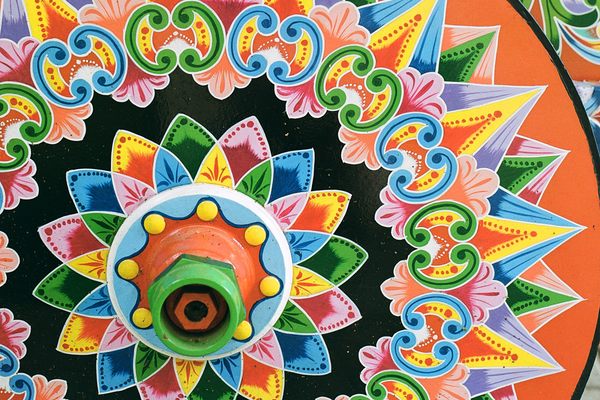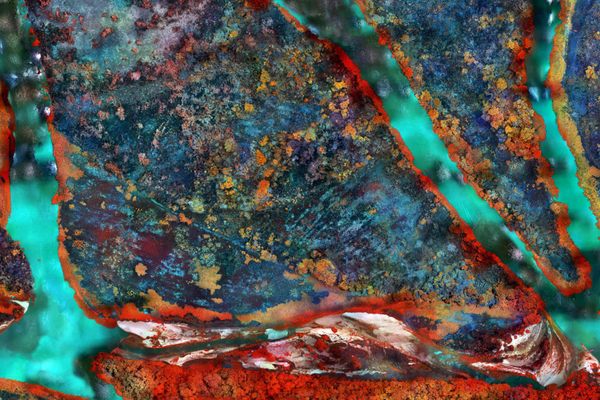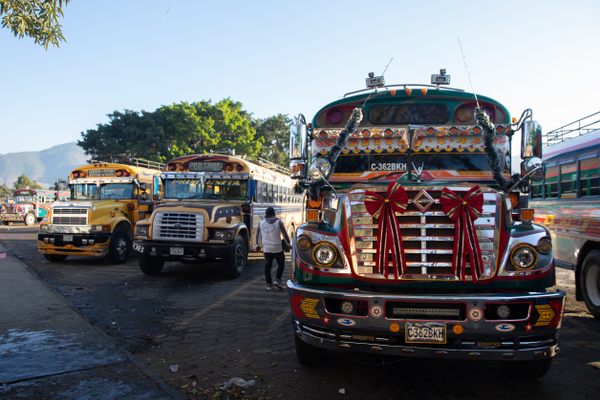Striking Aerial Photographs of Tiny Humans
 Disney’s Typhoon Lagoon Water Park, Florida. (All photos: © Jason Hawkes)
Disney’s Typhoon Lagoon Water Park, Florida. (All photos: © Jason Hawkes)
London-based photographer Jason Hawkes has spent nearly two decades looking at cities from above. Several times a week he climbs into a helicopter and, though an open door, photographs the vistas below him. Hawkes is most well known for his stunning aerial shots of London, which show the massive expanse of the city: the changing skyline, sprawling neighborhoods, and curves of the River Thames.
In his “People” series, Hawkes focuses on groups of people from above. It’s a fascinating look at how we use space in relation to our environment and each other, and offers a new perspective on familiar scenes, from lying on the beach to crossing the street. Atlas Obscura spoke with Jason about being tethered to the interior of a helicopter, and what he discovers about his city from this unique vantage point.
How did you start working in aerial photography?
I studied photography at college, then moved to London to start work as an assistant in a fashion and still life studio. A few months later, a couple of friends and I took a microlight flight just for fun one weekend. The flying part was pretty amazing, but what I really could not believe were the incredible patterns you see from the air. Even very mundane things can become really quite beautiful when viewed from a completely new angle, and I was immediately hooked.
 Diana Memorial, Kensington, London.
Diana Memorial, Kensington, London.
What are some of the challenges and logistics when it comes to shooting aerial photography?
I’ve done nothing but aerial photography since that point, so I’m pretty used to the challenges now! I only shoot from helicopters and have to take the door off. Nowadays I use twin-engine machines for 95% of my work. My gear and I are tethered to hard points in the helicopter, and I’ll normally take four camera bodies so I don’t have to worry about changing lenses. I always use GPS units attached to the cameras for easy identification of random places. 80% of my work is in the UK and 20% internationally so the most difficult thing really is making sure you are up when the light and visibility are great – that can take quite a lot of planning and sitting around at airports.
What do you learn about a city like London when viewed from above as frequently as you do? Does it alter your perspective?
I get to fly over London once or twice most weeks, and I’ve been doing so for years and years now. But it never ceases to amaze me. It’s fascinating to see how different parts of London actually sit together, and of course the skyline in London has changed dramatically in the last five years with some stunning new buildings going up, and plenty of others in the pipeline.
 Commuters, London Bridge, London.
Commuters, London Bridge, London.
How did the ‘people’ project come about?
One of the strange things I always find, particularly when flying over cities and built up areas, is how seldomly you actually see people. In fact often it’s as if everyone has packed up and gone elsewhere. So I always shoot groups of people when I come across them. I love the fact spaces between people become so obvious – you can almost see the personal space that they regard as psychologically theirs – and the way that can differ in different environments.
 Szechenyi Spa Baths in Budapest.
Szechenyi Spa Baths in Budapest.
 Garden Party, Buckingham Palace, London.
Garden Party, Buckingham Palace, London.
 Asparagus pickers, Warwickshire, England.
Asparagus pickers, Warwickshire, England.
 Trafalgar Square, London.
Trafalgar Square, London.
What do you look for when shooting people from above?
I don’t have any ‘set-in-stone’ criteria, because you don’t know what you’ll see when you fly – the only times shots are set up for me are when working on specific campaigns for ad or design agencies. So I look for the same things when shooting people as I do when shooting anything else; strong, simple and arresting images.
What do you think draws people to aerial photography?
I suppose it’s seeing the everyday but from a completely different perspective. People are just drawn to catching a glimpse of life from a different angle. Personally, I love the secrets you learn from the air – the rooftop gardens you’d never know where there, the blocks of colour you can’t see from the ground, the really beautiful and unexpected patterns found in the manmade as well as in nature.
 People about to watch movie outside at Chelsea Waterside Park, Manhattan, New York.
People about to watch movie outside at Chelsea Waterside Park, Manhattan, New York.
 Scholl playground, Ir-Rabat, Malta.
Scholl playground, Ir-Rabat, Malta.
 Surfers, Waikiki Bay, Honolulu.
Surfers, Waikiki Bay, Honolulu.
 Music concert, Hyde Park, London.
Music concert, Hyde Park, London.
 Sports playing field, Villanueva de la Cañada, Madrid, Spain.
Sports playing field, Villanueva de la Cañada, Madrid, Spain.
 Shoppers at Oxford Circus, London.
Shoppers at Oxford Circus, London.
 Critical Mass Ride, Budapest.
Critical Mass Ride, Budapest.
Do you have any particular favorites from the ‘people’ collection, and if so, what are they and why?
I really like the image of people in the pool, which was taken in South London. Everything about it works – the simplicity of a single background colour and the dots of the people make for a very strong image, capturing a moment in time. As soon as I flew over the pool, I could visualize how I wanted it to look, but to get right overhead was tricky and a testament, as usual, to the skills of the pilots I fly with!
 Tooting Bec Lido, London.
Tooting Bec Lido, London.
You’re especially known for your photographs of London’s skyline, which you’ve photographed many times. Do you have a particular image that is most memorable for you?
I’ve been shooting at night from helicopters for around six years now, and still get an incredible buzz from it. When the sun goes down, cities seem to really come alive and you get such a sense of excitement and energy; no two nights in the same place look the same.

























Follow us on Twitter to get the latest on the world's hidden wonders.
Like us on Facebook to get the latest on the world's hidden wonders.
Follow us on Twitter Like us on Facebook